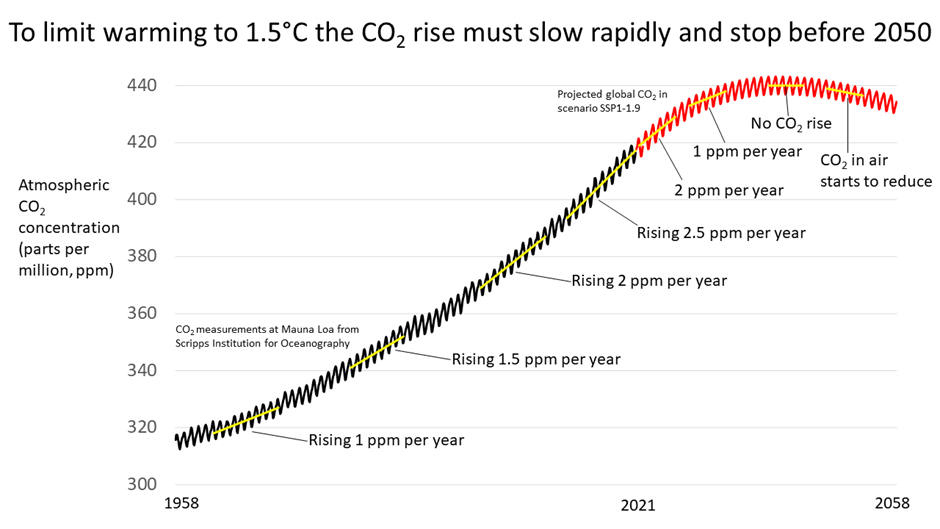The Met Office global carbon-dioxide forecast for 2022 has been published today [Tuesday 11 January, 2022].
Professor Richard Betts MBE – who leads the team behind the CO2 forecast – said: “Our 2022 forecast suggests that nature will temporarily be doing our ‘heavy lifting’ this year as ecosystems – such as tropical forests - are expected to draw down a higher proportion of carbon-dioxide from the atmosphere than usual.
“However, if the world is to meet ambitious targets within the Paris Agreement, the long-term build-up of CO2 in the atmosphere needs to slow rapidly and come to a halt before mid-century. This would need an immediate slowing in the rate that human-induced carbon-dioxide emissions are added to the atmosphere, leading rapidly to a complete stop. A temporary boost from nature is obviously welcome, but we won’t get this free dividend in most years.”
In 1958 – when the first measurements were taken at Hawaii’s Mauna Loa observatory – the rate of annual rise of carbon-dioxide in the atmosphere was less than one part per million (ppm). The atmospheric concentration of CO2 was then about 316 ppm. The rate of rise has accelerated over 60 years and the rise over the last ten years has been nearly 2.5 ppm per year, with the atmospheric concentration reaching 416 ppm on average last year.
The Met Office forecast suggests that relative to 2021, the rise in the atmospheric concentration of CO2 in 2022 will be 2.14 ± 0.52 ppm. In the scenario used by the IPCC to study global warming limited to 1.5°C long-term, the projected rise slows to an average of 2 ppm per year over the next five years, almost 20% lower than the recent average annual rise. In that scenario, the rise then continues to slow rapidly, and then comes to a halt in the early 2040s. Carbon-dioxide levels then decline over the rest of the century in that scenario. The human emissions driving this fall rapidly, reaching net zero mid-century and becoming negative after that.







